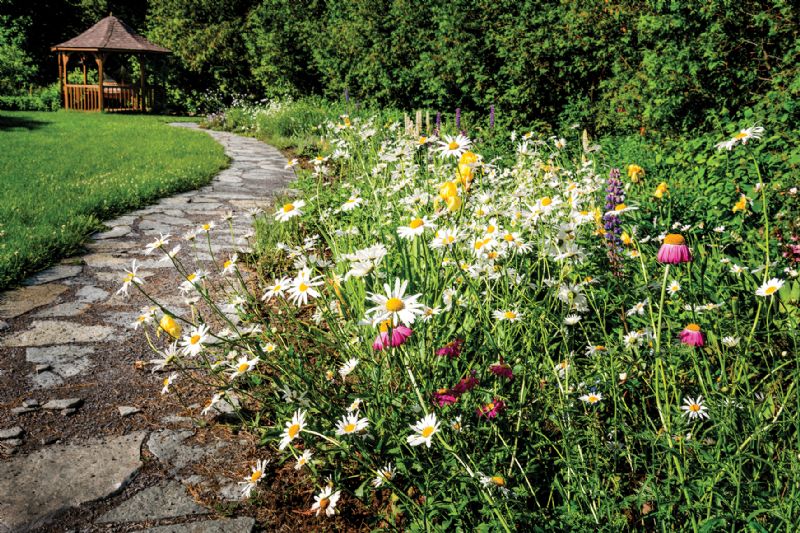- Home
- News, Articles & Reviews
We are hiring! Please click here to join our growing magazine delivery team in Gloucestershire!
Areas
Homes & Gardens
Archive

Create a wildflower patch
All Areas > Homes & Gardens > In the Garden
Author: Daniel Hoggins, Posted: Tuesday, 25th March 2025, 09:00
April is a glorious month. With longer days and warmer weather, everything starts greening up and growing in earnest.
Towards the end of the month, to avoid those late frosts, tender plants like sweet peas can begin to be planted out, but it’s not too late to plant out the seeds now either. I like to grow mine up a structure made from branches of hazel or willow, tied together and with lots of branches intertwined for the sweet peas to cling to, but a wigwam of bamboo canes can look just as lovely when covered in flowers.
Deadhead but leave the green foliage
With the daffodil and tulip displays waning, it is a good idea to deadhead them but to leave the green stalks and foliage to photosynthesise, then clear them away once they’re really brown.
Along with the plants you want, and the weeds you don’t, all growing like mad, no doubt your lawn is too and maybe this is the year you try out one of those wildflower meadows everyone keeps talking about these days. Be warned, a wildflower meadow is one of those things that won’t look as good the first year you start, but when it’s been managed properly for a few years it can really enhance your garden.
Reduce your lawn’s fertility
To make a wildflower patch in your lawn, first you’re going to have to reduce its fertility so the grass doesn’t grow as strong and smother your wildflower plants. You don’t want to eradicate the grass entirely but it does need knocking back a bit. So mow it really short, until areas of it are scalped down to the soil, and then rake it hard to essentially scarify the ground.
Then it’s time to sow some seed and it is a really good idea to get loads of yellow rattle seed as this native wildflower is actually semi-parasitic to grass, feeding off its nutrients and thus reducing the grass’s vigour and allowing other wildflowers to flourish. There are loads of native wildflower seed mixes on the market these days and anything with knapweed, oxeye daisy, poppy, yarrow and campion in it is going to look great.
Benefit a whole host of wildlife
After the seed is down you don’t need to touch the area until September when you cut and clear it, so it really is a great way to reduce your weekly gardening jobs, benefit a whole host of wildlife in your garden and, of course, offer you the chance to enjoy your garden from a new perspective.Other Images
Copyright © 2025 The Local Answer Limited.
Unauthorized use and/or duplication of this material without express and written permission from this site's author and/or owner is strictly prohibited. Excerpts and links may be used, provided that full and clear credit is given to The Local Answer Limited and thelocalanswer.co.uk with appropriate and specific direction to the original content.More articles you may be interested in...


© 2025 The Local Answer Limited - Registered in England and Wales - Company No. 06929408
Unit H, Churchill Industrial Estate, Churchill Road, Leckhampton, Cheltenham, GL53 7EG - VAT Registration No. 975613000You are leaving the TLA website...
You are now leaving the TLA website and are going to a website that is not operated by us. The Local Answer are not responsible for the content or availability of linked sites, and cannot accept liability if the linked site has been compromised and contains unsuitable images or other content. If you wish to proceed, please click the "Continue" button below:




